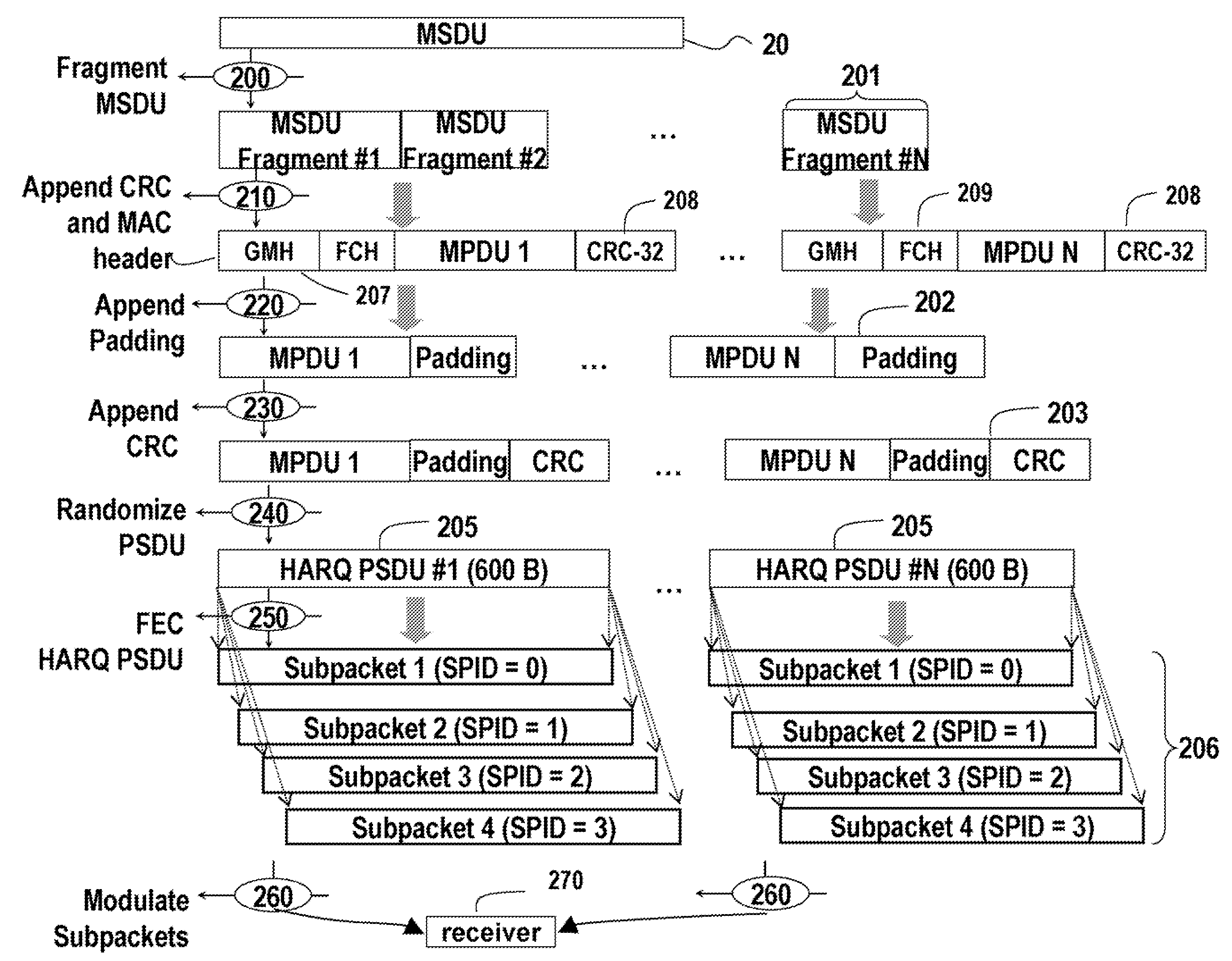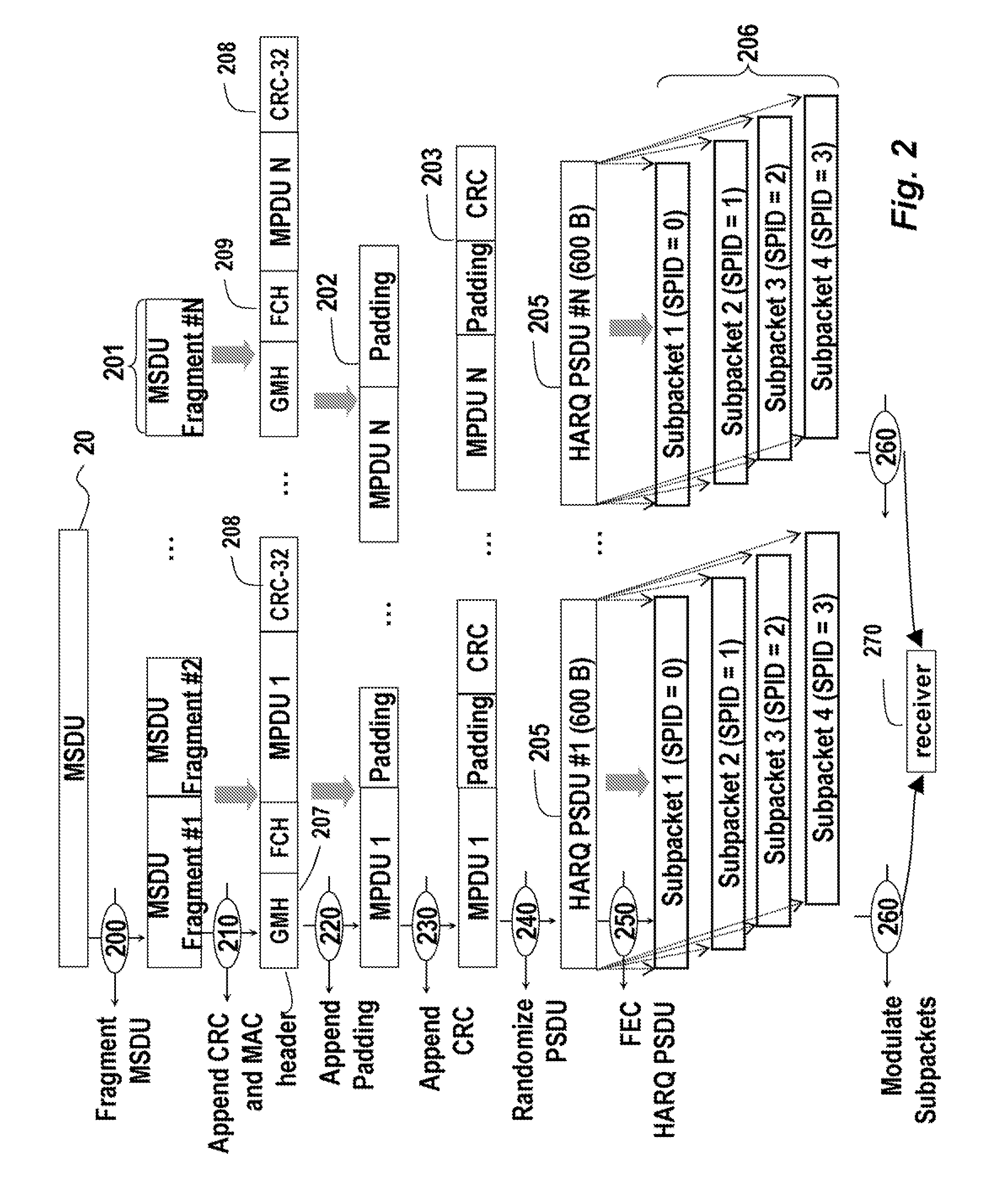Adaptive Fragmentation for HARQ in Wireless OFDMA Networks
a wireless ofdma network and fragmentation technology, applied in the field of mobile wireless networks, can solve the problems of system performance degradation over channels, resource underutilization in current arq protocol will further deteriorate, so as to reduce channel quality and increase bit error rate
- Summary
- Abstract
- Description
- Claims
- Application Information
AI Technical Summary
Benefits of technology
Problems solved by technology
Method used
Image
Examples
Embodiment Construction
[0031]HARQ Operations without MAC Layer Fragmentation
[0032]Hybrid automatic repeat request (HARQ) is defined in the IEEE 802.16-2004 and 802.16e-2005 standards for the OFDMA physical (PHY) layer. The HARQ protocol, which requires both physical layer and MAC layer support, is a typical example of cross-layer system design for wireless communication networks. Combining MAC layer fragmentation and PHY / MAC cross-layer HARQ enables an integrated multi-layer control, which can improve system performance.
[0033]At the physical layer, two specific techniques, namely chase combining (CC) and incremental redundancy (IR), provide coding gain and additional redundancy gain for HARQ. In addition, a stop-and-wait mechanism is used by HARQ at the media access control (MAC) layer to provide automatic repeat request (ARQ) capability.
[0034]Because the technical specification related to HARQ in the IEEE 802.16-2004 standard has been modified in the IEEE 802.16e-2005 standard, the HARQ protocol defined ...
PUM
 Login to View More
Login to View More Abstract
Description
Claims
Application Information
 Login to View More
Login to View More - R&D
- Intellectual Property
- Life Sciences
- Materials
- Tech Scout
- Unparalleled Data Quality
- Higher Quality Content
- 60% Fewer Hallucinations
Browse by: Latest US Patents, China's latest patents, Technical Efficacy Thesaurus, Application Domain, Technology Topic, Popular Technical Reports.
© 2025 PatSnap. All rights reserved.Legal|Privacy policy|Modern Slavery Act Transparency Statement|Sitemap|About US| Contact US: help@patsnap.com



